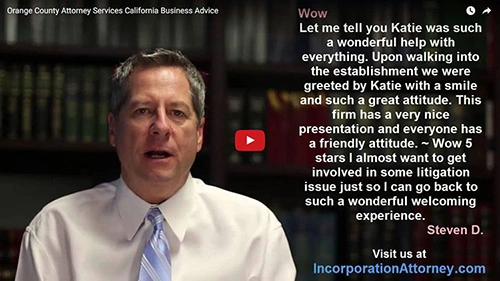The time has come: you’re ready to wind up your nonprofit in California and officially dissolve. When you have reached this decision, going through the process can often be stressful and emotional. No matter the reason for dissolution, the steps reach far beyond turning on the ‘permanently closed’ sign.
Dissolving a nonprofit has different requirements than dissolving a for-profit corporation. In fact, you could even open yourself up to a world of liabilities if you don’t follow the right steps.
To ensure you don’t miss any legal requirements, we have provided a basic breakdown of the steps you’ll need to take to wind up a nonprofit corporation in California. We always recommend working with a lawyer that can mitigate the fine details of the dissolution, to ensure your legal protection is solid.
Please Note! This guide also applies to:
Public Benefit Corporations subject to Corporations Code sections 6615 and 6716(c)
Mutual Benefit Corporations subject to Corporations Code sections 7238 and 8716
Religious Corporations subject to Corporations Code section 9680.
9 Steps on How to Dissolve a Nonprofit Corporation in California
Starting from agreement to final notices, we break down the basics of how you can dissolve your nonprofit in California:
1. Draft a “Plan of Dissolution”: Presenting How to Dissolve Your Nonprofit in California to the Board
At its core, a plan of dissolution is a written document that outlines how the nonprofit will be handling and distributing the remaining assets and liabilities. This is the plan that the board or voting members will agree to when voting to dissolve the nonprofit.
As this plan details the entire process, we suggest outlining who will be accountable for handling various parts of the dissolution. This ensures there is documentation for the various responsibilities in handling assets and liabilities.
2. Vote by Nonprofit Board or Majority of Corporation’s Membership to Dissolve
You are required to have any voting members (usually the board of directors) of the organization hold a vote for the dissolution of the nonprofit corporation and then document this in the minutes of your corporate records. The vote should generally be accompanied by a ‘plan of dissolution’ for the members to review, so they understand how to dissolve the nonprofit.
If there are no voting members or you do not have a board of directors, you can move forward on closing the nonprofit organization. We recommend working with a lawyer that specializes in incorporation and dissolution to ensure there are no other members that need to be involved in the voting.
3. Prepare Certificate of Election to Wind Up and Dissolve (if applicable) and/or a Certificate of Dissolution
Depending on your nonprofit corporation, you will file one of three forms with the Secretary of State: Nonprofit Short Form Dissolution Certificate (Form DSF NP), Nonprofit Certificate of Election to Wind Up and Dissolve (Form ELEC NP), Nonprofit Certificate of Dissolution (Form DISS NP).
You can find the requirements to help you determine which form to use (alongside the most recent version of the forms) on the California Secretary of State’s website.
These sample certificate forms include the instructions for filling out and submitting the forms.
4. Identify and Pay off Current Debts (including taxes)
Any liabilities, taxes, future contractual obligations, and debts need to be accounted for and paid off or terminated. You will need to determine whether all the obligations and liabilities can be met with existing cash, if assets need to be sold to pay them off, or if remaining assets are insufficient and bankruptcy is a better option. The final documents for your finances should reflect no balances or debts for liabilities or assets.
5. File Final State Tax Return and Verify Current Status with Franchise Tax Board
Your final tax return will either be the IRS Form 990, 990-EZ, or 990-PF. The final state tax return will officially dissolve your business for tax purposes, and without it your nonprofit could still be considered operational (and be taxed). You’ll want to ensure it is dissolved tax-wise by confirming with the tax board.
*Note from the Attorney General’s office:
Due to the passage of Assembly Bill 2341 (9/29/06), which amends Revenue and Taxation Code section 6519, the Franchise Tax Board no longer requires a “Tax Clearance Certificate.” However, dissolution documents cannot be filed on behalf of a suspended corporation. (Revenue and Taxation Code sections 23301 and 23775.) Further information and instructions are available from the Franchise Tax Board’s website: http://www.ftb.ca.gov/forms/search/index.aspx
6. Plan Distribution of Remaining Assets
One of the biggest differences between dissolving a nonprofit organization and a for-profit corporation is the distribution of assets. It is a legal requirement to transfer all remaining assets of your nonprofit to another tax-exempt organization (or the government).
When distributing remaining assets, this means you cannot simply give them away to individuals—including volunteers, board members, those served, or employees. However, once you determine the “fair market value” for your assets, the nonprofit can sell those assets if the entity buying the asset is paying close to or at that value—termed as a “reasonable amount.”
You should consult with external appraisers, and other professionals to understand the monetary value of your assets. And remember, this includes potential assets such as trademarks!
7. Obtain a Dissolution Waiver from the Attorney General’s Office Before Disposing of Any Remaining Assets
More Coming soon!
8. Submit Final Notice of Submission to the Secretary of State’s Office
More Coming soon!
9. The Final Step: Submit Final Notice of Submission to the Attorney General’s Office
More Coming soon!








